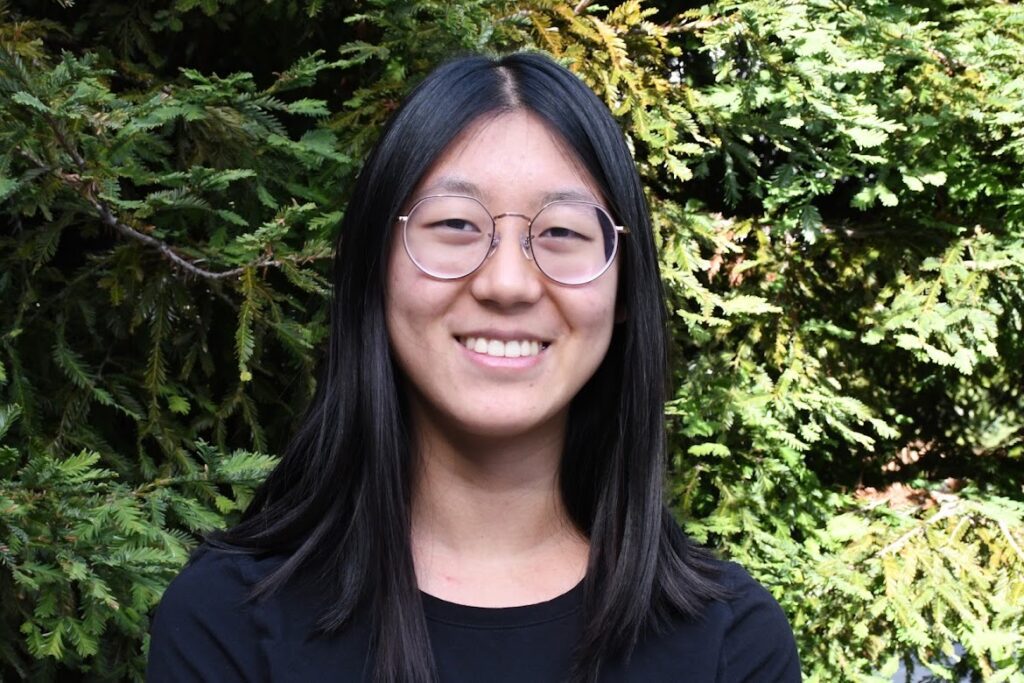Alana Yang

The development of programmable nuclease CRISPR-Cas9 has given scientists the opportunity to correct disease-causing genes in patients with unprecedented precision. Building upon these advancements, my collaborators and I are developing a non-viral CRISPR-Cas therapeutic platform for rare inherited immune diseases. Our current focus is the specific application of this platform approach to treating Artemis-deficient severe combined immunodeficiency (ART-SCID), which is the most difficult form of SCID to treat. Furthermore, the current method of diagnosis for ART-SCID is a radiosensitivity assay that takes 6-8 weeks–far too long for patients whose life […]
Christopher Yoo

Atypical somatosensation is associated with a variety of neurodevelopmental disorders, but the mechanisms responsible for experience-dependent somatosensory cortex (S1) development are largely unknown at the cellular level. While single-cell transcriptomes exist for adult S1, none have been completed across early developmental timepoints. Understanding the contribution of sensory experience to cell type development and plasticity is essential for developing treatments for neurodevelopmental disorders, like autism, that are characterized by impairment of experience-dependent plasticity. My project will test the hypothesis that sensory experience is crucial for normal S1 development. I will use […]
Az Zhang

The subject of this project delves into the nuanced regulatory functions of Long Undecoded Transcript Isoforms (LUTIs) within the realm of gene expression. This line of inquiry is driven by a pivotal question: Given LUTIs, once simply considered alternatively spliced coding transcripts, are found not translated into proteins, how do they impact gene expression across the genome? This inquiry is crucial, as it challenges existing models of genetic regulation. To address this question, the project integrates in silico analysis with experimental validation to systematically identify LUTIs and delineate their mechanisms […]
Luyang Zhang

Plants defend themselves against disease using germline-encoded innate immune receptors. Even so, pathogens are particularly challenging in that they often reproduce more rapidly than plants and tend to accumulate mutations that drive their evolution and diversification at an elevated pace. This accelerated evolutionary process necessitates the development of equally dynamic plant mechanisms of pathogen recognition. Deaminases are enzymes that remove amine groups from their nucleotide substrates. Existing literature indicates that certain classes of deaminases are capable of creating cytosine to uracil point mutations in DNA that contribute to bacterial and […]
Aakarsh Vermani

The rate at which DNA mutations occur is highly variable at different positions of the human genome. An accurate characterization of localized mutation rates could enable us to infer evolutionary histories, identify disease-associated genes, and even predict viral evolution, helping prevent pandemics like COVID-19. The heterogeneity of rates across the genome and the myriad of factors affecting them complicate this task, but the recent success of biological language models on related tasks like variant effect prediction signifies they could be a valuable tool for predicting mutation rates. Our preliminary results […]
Bradley Vu

Methane is a significant target in efforts to combat climate change due to its high potency as a greenhouse gas. In the agricultural sector, cattle farming is among the highest contributors to methane emissions. Promisingly, the compound bromoform can inhibit methane production within cattle and reduce intestinal methane levels. Cattle ranchers have applied this process by feeding cows a red seaweed that natively synthesizes bromoform. However, concentrated, industrial seaweed farming can be costly and the practices used can themselves contribute to greenhouse gas emissions. Therefore, a novel method of bromoform […]
Abby Wang

Microbiome editing is an emerging field that enables the genetic modification of bacteria within complex microbial communities and is a promising approach to tackle many scientific and technological questions in microbiology. The Rubin Lab developed a plasmid-based gene-editing tool (DART), encoding CRISPR-associated transposons (CASTs) capable of making species- and site-specific edits in a bacterial community. While DART can efficiently make targeted edits in model bacteria, the editing efficiency remains low across phylogenetically diverse bacteria, thus limiting the range of targets for community editing. Our current research used a genome-wide mutant […]
Meisen Wang

The physiological blind spot is a region in the visual field that corresponds to the location of the optic nerve of an eye. The optic nerve is a bundle of nerve fibers that connect the eye and the brain. Because there are no photoreceptors (light sensors) in the optic nerve, this region is “blind” in that the brain receives no visual input from this location. However, as we do not see a black spot in the periphery of our vision even with only one eye, the lack of informational input […]
Jillian Wilson

Multipotent neural crest cells have the capability to differentiate into derivatives. By studying the gene regulatory networks that precisely control their development, we can discover how these networks are utilized in repair mechanisms and how they malfunction in relation to disease. Using the chicken embryo as a model organism, I will focus on cells that migrate into the heart and study the role of transcription factor Egr1 in their development. Egr1 is a BMP-responsive gene, but how is it regulated in the neural crest? I will look at the gene […]
Jonanne Talebloo

In today’s digital age, there is increasing worry about how children and adolescents are affected by their screen habits. Excessive screen time among them has been tied to various health issues like mental health concerns, physical ailments, obesity, sedentary lifestyles, and sleep disturbances. As parents play key roles during childhood and adolescence, parenting approaches, and home atmospheres have been recognized as influencers that may contribute to children’s screen use patterns. In general, more attentive parental supervision has been linked to reduced total screen usage among children and adolescents. Our purpose […]